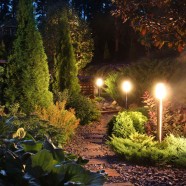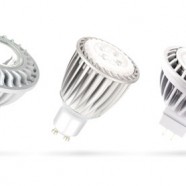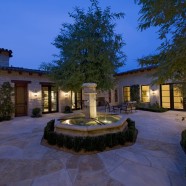How to Maintain Your Outdoor Landscape Lighting in Good Condition
Spot lighting and general area lighting are an attractive and important part of many landscape plans. Why put in elaborate trees and hedge designs if you can’t see them after dark? If you’ve decided to include landscape lighting in the plans for your property, set up an electrical maintenance schedule to keep your lights in good running order. Your residential electrical contractor can not only install all the outdoor light designs you want, he can tell you when your system needs maintenance during the year.
Visibility
Landscape lighting, by its nature, is set close to the ground and is vulnerable to damage from all landscaping machines such as lawnmowers and weed trimmers. Placing a set of green lights in the middle of the lawn might be a good design choice, but those lights aren’t likely to last long. They’ll fall victim to your lawnmower before the end of summer, most likely. Either choose a color that stands out from the lawn, such as black or a color to match your flowers, or put something around each light fixture that draws the eye. White wire fencing is inexpensive, light, and simple to install, yet you’ll see them from halfway across the yard. And lights that you see are less likely to be damaged.
Materials
The atmosphere in your environment makes a big difference when it comes to your ability to maintain landscape lighting. Some metal fixtures can corrode when installed in salt air, like the air that’s found in southeastern Florida. Although you may love the look of other metals, brass and copper are superior finishes for salt air. They may patina over time, but they’re meant to, and the change in color is a natural process that won’t affect your lights’ operating ability.
Dead Light
One of the simplest forms of electrical maintenance happens when a light bulb seems to blow out. Often, it’s not the bulb but the socket in which it’s placed. Unplug the lighting system to make sure no power is running through it, then take the top off the light. Replace the bulb with another one from the same string. If the bulb still won’t light, you probably have corrosion in the socket. Cut down an emery board until it’s small enough to fit into the slot where the bulb goes, and slide it up and down to file off any corrosion that may be built up on the contacts. When you replace the bulb and turn the power back on, the lights should work like normal.
Maintaining Lights
Your residential electrical contractor should come out twice a year for basic maintenance. He should change all the bulbs to prevent them from burning out at inopportune times. He’ll also spray a corrosion preventative compound to the base of the lamp to help prevent salt air and sprinkler moisture from corroding the light’s contacts. New corrosion preventative should be applied each time the lights are changed.
Electrical Outlet
One of the best ways to maintain your landscape lighting is to make sure it’s connected to a safe system. Since the outlet and plug for your lights will be outdoors in the elements and subject to rain, the plug should be connected to a GFCI outlet. If your home doesn’t have this available, have your electrical contractor install one at the same time the lights are installed, or as soon after as possible if you’re inheriting an older system.
Read More8 Benefits of LED Retrofit Lighting
If you’re comparing the costs of retrofitting LED lights to replace your traditional bulbs, the initial cost might be a reason to make you think twice. It’s true, LED, or Light Emitting Diode, lights do cost more in their first installation, but after they’re in they are virtually maintenance free for many years. Besides the benefits of paying a fraction of the cost of your old power bill, you’ll find many more benefits to changing your lighting from incandescent or fluorescent to LED.
Benefit #1: Lower Energy Costs
It can’t be denied that the much smaller energy usage in LED retrofit lighting compared to traditional bulbs makes a powerful argument for LED retrofits in your building. Studies have shown that, in normal daily use, LED lights use a small fraction of the power that traditional bulbs do.
Benefit #2: Long Life
On average, LED bulbs are rated to last 100,000 hours. This means that you can light a building for eight hours each day and you won’t have to replace the bulb for about 20 years. Even if you leave the lights on 24 hours a day, it would take over 11 years for the LED bulb to be exhausted. In addition, these bulbs don’t burn out, leaving you suddenly in the dark. LEDs simply get dimmer and dimmer at the end of their lives, giving you ample warning when it’s finally time to change them.
Benefit #3: Low Voltage
Replacement LED lamps use so little voltage that it’s possible to illuminate the outside of your entire building using the power of a few solar energy panels. This makes them extremely useful for remote areas, plus they’re reliable even in a power outage.
Benefit #4: Greener Light
LED lights contain absolutely no dangerous materials and are 100 percent recyclable. Unlike fluorescent bulbs, which can contain mercury and other dangerous chemicals, LEDs are completely safe and inert.
Benefit #5: Frequent Switching and Instant On
Unlike fluorescent bulbs, which can take half a minute or more to warm up and reach full lighting strength, LED lights are instantly bright the second you turn on the switch.
In addition, you can switch LED lights on and off as frequently and rapidly as you like. This behavior severely affects the life of traditional light bulbs, but it has no effect on LED retrofits.
Benefit #6: Work Well in Extremely Cold Weather
In areas where the outdoor temperature frequently drops below freezing, or in commercial buildings that have cold areas such as freezers, traditional bulbs can pose a challenge: less efficient operation and a shorter lifespan. LED lights work exactly the same whether the environment is 72 degrees or below zero on a daily basis.
Benefit #7: No UV Emissions
For interiors that have light-sensitive furnishings such as antiques in museums, paintings in art galleries, and fabric in historic quilt collections, LED retrofits are much safer to use than traditional bulbs. These lights give off almost no infrared light and virtually no UV emissions, making them the safest lighting choice for your most delicate property.
Benefit #8: Durable and Long-Lasting
LED lights are made of damage resistant materials, and can withstand wind, water, jostling, dropping, and even purposeful vandalism. This makes them ideal for construction sites, outdoor public areas, commercial buildings, and anywhere outdoors that’s frequently subject to severe weather.
Read MoreHow to Upgrade Your Outdoor Lighting to Achieve Energy Savings
One of the best money saving tips you can make to lower your energy bill is to upgrade your outdoor lighting. Switching your lighting from traditional bulbs to more efficient LED lights can save you hundreds of dollars each year. Energy efficiency is the selling point of all LED lighting systems, but these lights can save you money in many different ways. Whether you have safety spotlights on your building or landscape lighting at the base of your property, you’ll enjoy energy savings for multiple reasons when you upgrade them to LED lighting.
Long Life
LED bulbs last about ten times as long as fluorescents, and even longer than that compared to traditional incandescent bulbs. When you’re not running out for light bulbs every few months, the savings can add up.
Durability
Traditional bulbs are built with a fragile filament, which makes them much easier to break. If you have birds pecking at your spotlight or lawnmowers running into your landscape ground lights, they’re apt to break on a regular basis. LEDs are solid, and can withstand a surprising amount of jarring and bumping.
Coolness
LED lights don’t heat up like traditional bulbs do. If your outdoor lights are a part of your landscape design, your expensive shrubbery can get dried out if the heat from the lights is concentrated on them for too long. Allowing your landscape to grow and mature without needing replacement plants is another way you’ll save with LED replacements.
Efficiency
You’ll see the largest energy savings from simple usage when comparing LED bulbs with incandescents or CFL varieties. LED replacements will use a fraction of the power, sometimes as low as 1/30th of the energy usage. While they use up much less power on a daily basis, LEDs are as bright or brighter than the traditional lights you’ll be replacing.
Increased Safety
You may see such large energy savings when you replace your current outdoor lighting with LED bulbs you’ll be able to add more lights around your property. Instead of just shining a light on the driveway or front door, you’ll be able to afford bright safety lights around the entire perimeter. A brighter yard is safer for people to walk around in after dark, and is also a deterrent for burglars and thieves.
Green Technology
LED lights are so efficient that you may be able to remove yours from the grid completely and hook them up to a small solar generator. A few unobtrusive solar cells can capture enough power to run the outdoor lights for many suburban homes. It’s free power to light your property, and a good safety addition in case of power outages.
Read More



Recent Comments